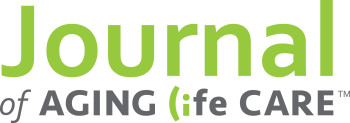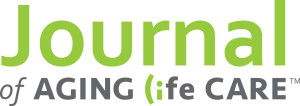
Latest Issue of the Journal of Aging Life Care™ Looks at Resilience in the Elderly and its Role in Successful Aging. In this issue are 12 articles that put meat on the term “successful aging” and provide direction for Aging Life Care Professionals™ / care managers.
by Jennifer E. Voorlas MSG, CMC – Aging Life Care Association™ Member and Editor in Chief of the Journal of Aging Life Care
The capacity to recover quickly from difficulty; fortitude, perseverance, buoyancy.
It is inevitable that life presents us with difficulties which require our attention and challenge our ability to manage our day to day lives. Unarguably, possessing strength and perseverance helps differentiate an individual who is able to cope with overcoming adversity and create a positive life, with one who has limited coping skills, just barely able to stay afloat when faced with the unknown currents of life.
In this issue are 12 articles that put meat on the term “successful aging” and provide direction for Aging Life Care Professionals™ / care managers so that they can play a well-planned and active role in helping clients embrace life’s challenges with hope and a renewed vision, transforming difficult situations to ones which use the client’s own strengths to achieve a positive outcome.
This edition explores in depth resilience from many unique perspectives, disciplines, and modalities which we hope will provide Aging Life Care Managers with a deeper understanding of how they can help their clients cope with the inevitable losses associated with the aging process.
We begin this issue with Dr. Coral Hoare who provides a detailed overview of the history and definition of resilience, successful aging research, and psychosocial resilience in the elderly. She then identifies three types of interventions that have proved to be successful: mindfulness meditation, cognitive reframing, and mastery development.
Dr. Claire Donnellan’s article on the Baltes’ model of successful aging provides a deep dive into a method of mastery development known as the SOC model, used in some health care venues but not widely known. SOC stands for Selection, Optimization, and Compensation, a theoretical approach that is very similar to the practice methods care managers already utilize: identifying goal-oriented interventions, focusing on person-centered approaches, and using a common language to agree on goal setting and methods to accomplish these goals.

Rosemary Decuir’s study is a personal reflection of how she got her own father to compensate for a significant loss in his life by utilizing core components of the SOC model in the creative process while helping to bring two families together. This piece exemplifies how lessons learned in our own family can help us be more effective with our clients.
In “Meaningful, Enjoyable, and Do-Able: Optimizing Older Adults’ Activity Engagement at Home,” Susan Hutchinson and Grace Warner demonstrate how SOC and Needs Driven Dementia Compromised Behavior (NDB) can be used to help care managers develop in-home leisure activities to engage older adults to improve on quality of life measures.
Paula Davis Laack speaks directly to Aging Life Care Professionals / care managers to help them build up their own resiliency so that they can cope with the inevitable stress and challenges of managing their practice and ultimately be more present for our clients.
Lucia McBee asks in her article “What Do We Feed?” She provides a deep and thoughtful analysis on how mindfulness meditation can provide care managers with an approach to health that teaches coping skills for both physical and emotional challenges.
Drs. Suma Chand and George Grossberg have written a thorough review of the literature of how behavioral and psychological symptoms of dementia challenge those who provide care to people with dementia. They suggest that the care managers who are aware of behavioral (as opposed to medication) management of difficult behavior, can be more useful to both family and facility caregivers.
Susan McFadden and Anne Basting briefly describe their 15 years of collaboration to develop a creative engagement approach to dealing with difficult behavior in people with dementia. TimeSlips Creative Storytelling is the product of this collaboration but the article includes information about many other programs that have used creative engagement including improvisation, dance, music, poetry and song writing which care managers can access.
Depicting how creative engagement works in the field, Laurie Bachner provides us with a brief description of how she has used yoga, music, and movement exercises to provide an individualized program for the clients of the care manager Helene Bergman in New York City.
Dr. Boffrey and Jennifer Pilcher Warren describe how their approach, Success Counseling, provides a method for care managers to focus on a client’s ability to evaluate themselves, and therefore improve their ability to independently solve their own problems, increasing their self-confidence and sense of personal control.
Dr. Frank Fee gives an overview of coaching as an approach to fostering resilience in older adults who are spousal caregivers – a population with whom care managers often work. He provides a case example showing how caregiver coaching can make a difference in the lives of caregivers and ultimately the loved ones they are caring for.
Finally, Phyllis Mensh Brostoff’s case study demonstrates how the skillful guidance of a care manager can help families recognize and better understand the resilience within their own family system, transforming what appears to be a negative situation into a sustainable outcome.
On behalf of the entire editorial board, we hope you enjoy this edition!
This blog is for informational purposes only and does not constitute, nor is it intended to be a substitute for, professional advice, diagnosis, or treatment. Information on this blog does not necessarily reflect official positions of the Aging Life Care Association™ and is provided “as is” without warranty. Always consult with a qualified professional with any particular questions you may have regarding your or a family member’s needs.
Source: ALCA Blog